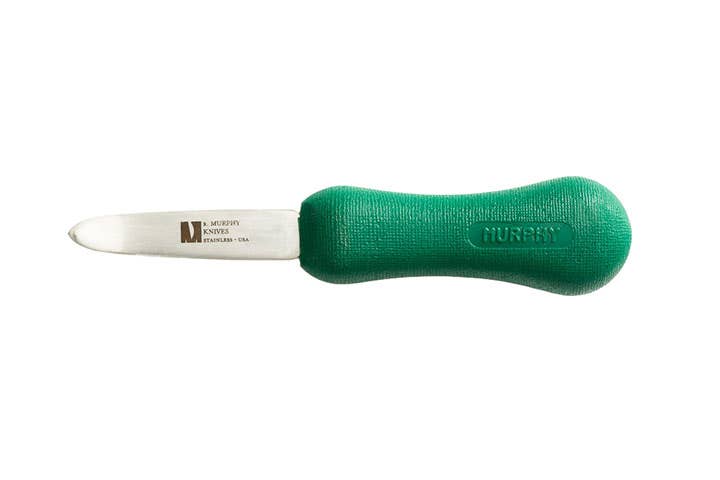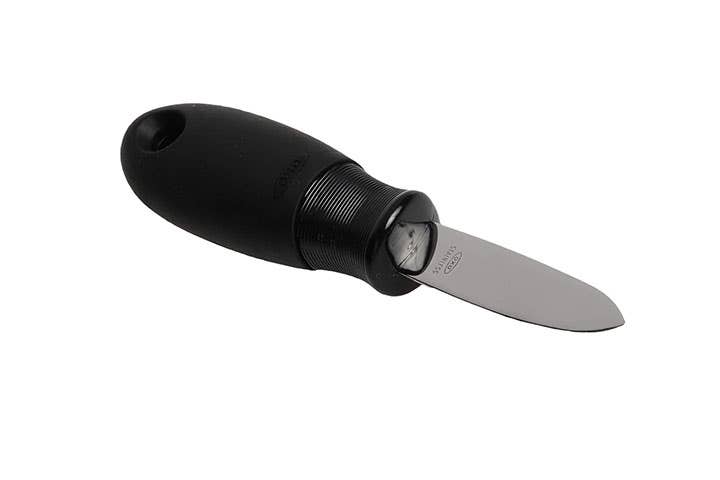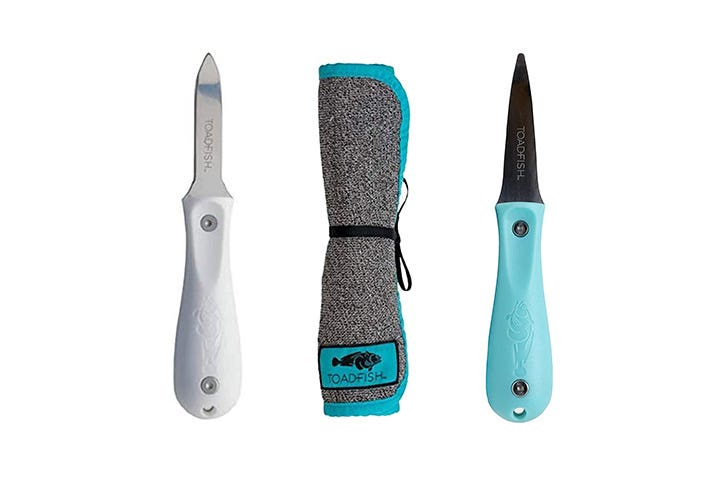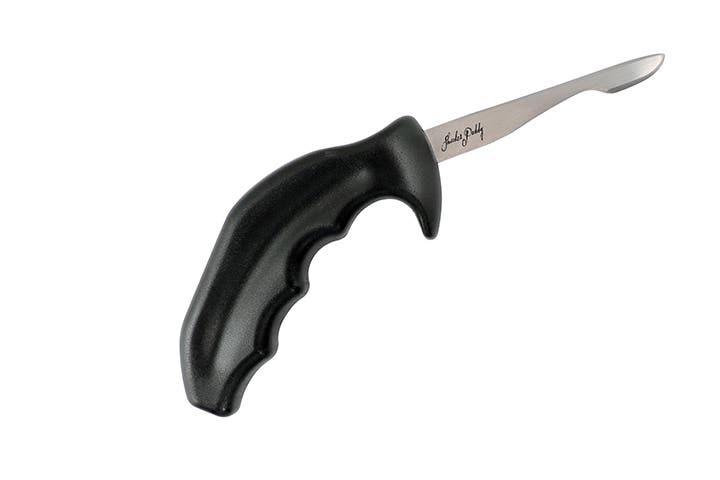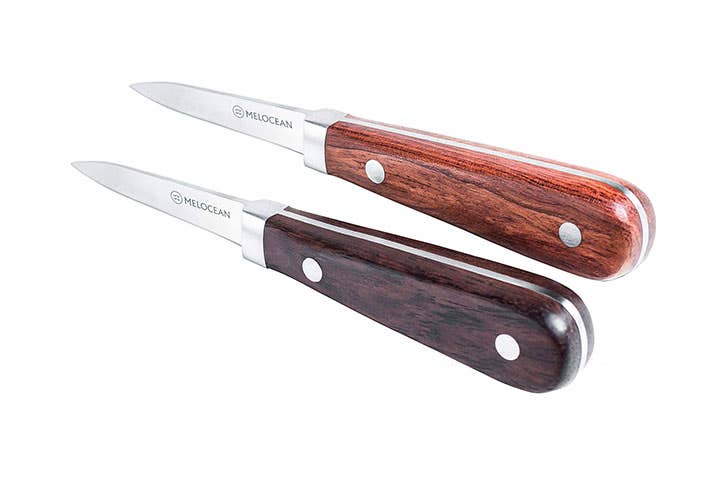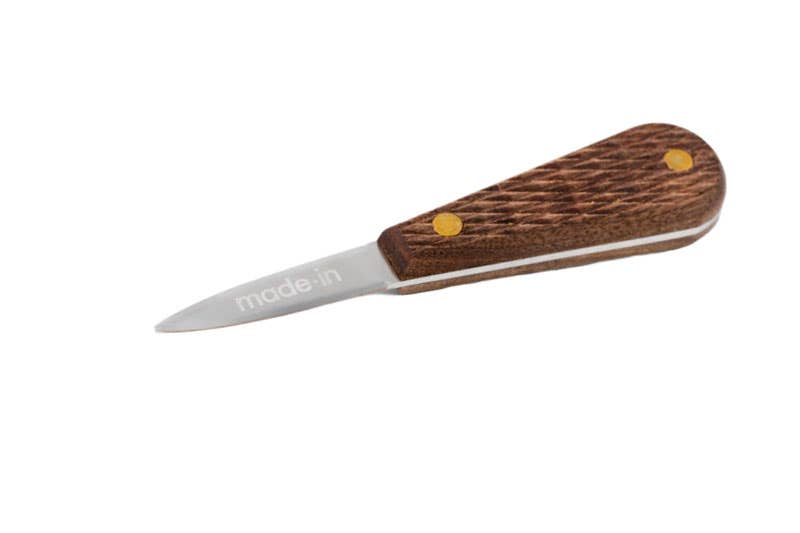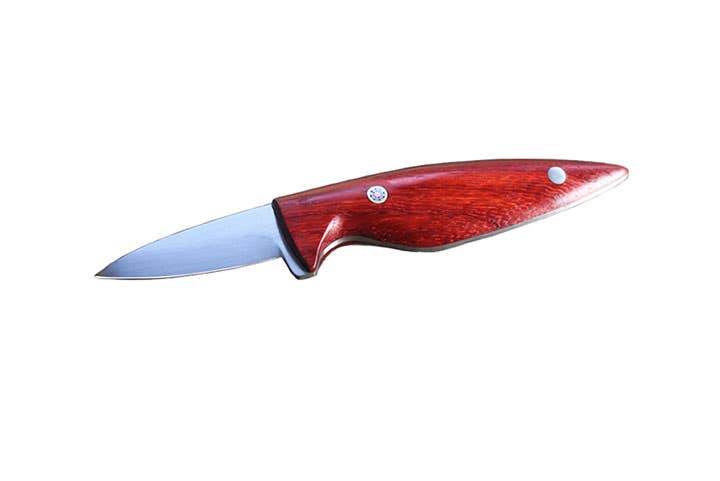The Best Oyster Knives Make Shucking a Breeze
Pry open your favorite bivalves easily, and in style.
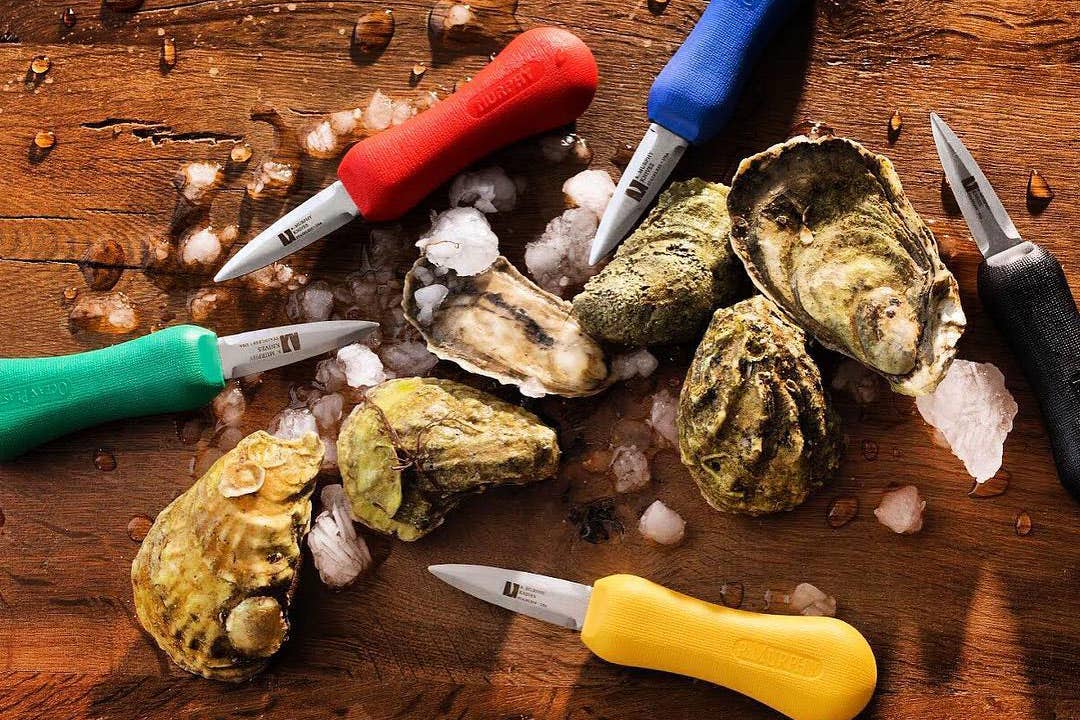
For most of us, oyster shucking is not an everyday skill, but whether you shuck on the regular or only a few times per year, having the right oyster knife can be essential to eating well—or struggling to eat much at all.
“We lose about half our knives a year because people accidentally throw them away, so I’m always thinking about oyster knives,” says Hope Barber-McIntosh of Bowen’s Island Restaurant, located on its own namesake island just outside of Charleston, South Carolina. Last year alone, the restaurant served 2,500 bushels of roasted oysters. That’s a lot of knives lost, a lot of knives replaced, and a lot of educating people on how to use them.
“First off, it’s important to protect your oyster-holding hand with a towel or a glove,” Barber-McIntosh says. “And then it’s essential to have an oyster knife with a handle that is well attached to the blade, comfortable, and sturdy.” Beyond that, since good oyster shucking always begins with cracking the shell’s hinge, a sharp point to the knife is a good thing, especially when shucking wild oysters (such as the kind served at Bowen’s) that often have thicker shells than the farmed variety.
Regardless of whether you’re eating wild or farmed oysters—raw, roasted, or baked with breadcrumbs and cheese—a good oyster knife is an essential kitchen tool for the seafood-serving cook. Here are some of our favorite picks.
Our Top Picks
- Best Overall: R. Murphy Knives New Haven Shucker
- Best Value: OXO Good Grips Stainless Steel Non-Slip Oyster Knife
- Best for the Beginner Oyster Enthusiast: Toadfish Oyster Shucker’s Bundle
- Best for the Gear Head: Swissmar Malpeque Shucker Paddy
- Best for Precision: Melocean Oyster Knife Shucking Set
- Best Classic / Modern Combo: Made-in Oyster Shucker
- Best for a Special Occasion: Emergo Designs Original Oyster Knife
Best Overall: R. Murphy Knives New Haven Shucker
Best Overall
Blade length: 2.58 inches | Blade: High carbon stainless steel | Handle: Recycled plastic
Pros
- Under $20
- Handle made from 100% recycled plastic collected in Haiti
- Bent tip for easy hinge access
Cons
- Hand-wash only
- Limited colors
Why we chose it: There are few better ways to celebrate the bounty of the ocean than by shucking a sustainable bivalve with a shucker whose construction materials have been cleaned from the ocean.
Chances are if you’ve been to an oyster festival in the last few years you’ve seen one of these bright green babies in the hands of someone shucking oysters, since they’re versatile for both beginners and professionals, have a non-slip grip, and clean up easily. Durable and made in the USA from recycled ocean plastic, these knives are meant to be serviceable (and they definitely hold up to bushels of oysters), but we especially love them because they are also good for the environment: just like oysters.
Best Value
Blade length: 2.75 inches | Blade: Stainless steel | Handle: Non-slip plastic
Pros
- Only $10.95
- Dishwasher safe
- Bent tip for easy hinge access
Cons
- Shorter handle reduces dexterity
- Only available in black
- Blade can warp with repeated use
Why we chose it: Oysters are a great party activity and food, and these sturdy knives are economical enough to buy multiples, yet durable enough to be a worthy take-home gift for favored guests.
With their non-slip grips, OXO brand products have become intertwined with the idea of safety in the kitchen, and so it makes sense that they’d build a sturdy, non-slip oyster shucker. The bulb of the handle fits easily and comfortably in the hand if you haven’t quite worn a callus from shucking bushels of oysters, and while wet shells might be slippery, this handle won’t be. And since these knives are not only useful, inexpensive, and dishwasher safe, they’re our choice for oyster parties, whether roasted, raw, or slurped dockside.
Best for the Beginner Oyster Enthusiast: Toadfish Oyster Shucker’s Bundle
Best for the Beginner Oyster Enthusiast
Blade length: 3 inches | Blade: Japanese stainless steel | Handle: Recycled plastic Included components: Two blades and a cut-resistant shucking towel
Pros
- Blade through design = durability
- Can be tightened easily
- Recycled plastic handles
Cons
- Limited colors
- Price
Why we chose it: This is the oyster knife set that can grow with you as you hone your oyster-shucking skills.
The person who has discovered the art and joy of shucking oysters will find this beautifully designed package from Toadfish the invitation to continue the journey. Not only is there a versatile, bent-tip knife designed for beginners, there is also a professional edition blade for cracking open thicker shells, perfect for when the novice is ready to go pro. Another pro touch is the cut-resistant cloth, which is way more fashionable than that dirty towel you’ve been reaching for. And a portion of Toadfish's profits go to support oyster bed restoration. Win, win.
Best for the Gearhead: Swissmar Malepeque Shucker Paddy
Best for the Gear Head
Blade length: 2 inches | Blade: Stainless steel | Handle: Plastic
Pros
- Dishwasher safe
- Also useful for shucking other shellfish such as scallops or clams
- Sharp, tapered tip can navigate hinge and cut abductor muscle with ease
Cons
- Limited colors
- Sharp point might be dangerous for less experienced users
- Learning curve to get comfortable using
Why we chose it: Versatility, precision, and the promise of speed with this knife means you can get to eating beautifully shucked oysters even faster.
If you’re looking for an oyster shucker that might be a part of the toolbox on BBC’s Top Gear, then Swissmar knows your style. Designed in collaboration with Patrick McMurray BPHE, World Champion oyster shucker, and Guinness Record Holder for 39 oysters opened in one minute, this shucker, with its dual-axis pistol grip handle design and integrated finger guard is built for precision and speed, just like that car you’ve been eyeing since forever. Because it is different from a lot of other shuckers on the market, it does take some practice, but once the learning curve is completed, you can achieve those competition-shucker dreams.
Best for Precision: Melocean Oyster Knife Shucking Set
Best for Precision
Blade length: 4 inches | Blade: 3cr13 Stainless steel | Handle: Wood
Pros
- Full Tang Blade
- Ergonomic handles
- Lifetime warranty
Cons
- Not dishwasher safe
- Wooden handle can get slippery
- Long, thin tip can be dangerous for less experienced users
Why we chose it: A sharp tip and sharp knife edge assist in opening oysters cleanly and detaching meat from the shell with ease.
While Hao Phan, line cook and oyster shucker extraordinaire at Automatic Seafood & Oysters in Birmingham, Alabama has an ever-expanding knife and shucker collection, he counts these Melocean shuckers as favorites. “Most of the bigger blades don’t slice through the inductor blade, and you end up having to scrape, which works, but makes it easier to mess up the oyster,” he says. His goal is to “shuck them fast, but make them look nice,” and the pointy tip on these knives can make quick work of breaking the hinge and getting into the oyster. Since Phan shucks 600-800 oysters during any busy shift, we’re inclined to take his advice. Another piece of his advice: “Treat these with the same care that you would a chef’s knife, and they will treat you well.”
Best Classic / Modern Combo: Made In Oyster Shucker
Best Classic / Modern Combo
Blade length: 2.63 inches | Blade: 420HC High carbon stainless steel | Handle: Walnut
Pros
- Made in the USA
- Crosshatch handle design is very sturdy grip
- Beautiful classic look
Cons
- Hand-wash
- Designed more for thicker-shelled East Coast oysters
Why we chose it: As beautiful to include in an Instagram photoshoot as it is functional when the cameras are off and the party is on, this crosshatched handle will keep you shucking all night long.
This cookware company has made a splash with chefs and professional cooks, and its oyster shucker delivers as well. For those that want a classic look that shies away from plastic, this dark walnut handle with its brass rivets looks the part, while its sharp blade and crosshatched, slightly oversized handle create a sturdy grip suitable for even less experienced shuckers. We suspect the crosshatching might splinter after years of use, especially if this sits in a puddle of salty water on an oyster table too long, but so far, its style and functionality have kept us going, as it works on everything from raw oysters from Prince Edward Island to roasted oysters, hot and bubbly out of the oven.
Best for a Special Occasion: Emergo Designs Original Oyster Knife
Best for a Special Occasion
Blade length: 2.5 inches | Blade: RWL34 stainless steel | Handle: Padauk wood
Pros
- Handmade in Netherlands
- Personalized engraving available
- Full tang
Cons
- Shipping usually takes weeks
- Pricey
- Limited number made
Why we chose it: Oysters are often celebratory, and if you’re celebrating something special, this knife is an heirloom in the making.
Made by a craftsman and engineer from an oyster-farming family that spans generations, these knives are beautiful and functional, and one-of-a-kind if you choose to engrave them. The handle is crafted of African Padauk wood, which has a subtle sheen, high durability, and natural resistance to decay (well-suited for the messy work of shucking oysters). It also comes in a wooden case with knife oil and a certificate of authenticity, so we don’t have to mention that this is hand-wash only, correct?
How We Chose These Products
The author is an oyster enthusiast who knows her way around a briny bivalve and has shucked many times with sub-standard oyster knives, so she knew what not to look for in a shucker. Then she tapped some professional restaurant experts who provided guidance—and in Phan’s case, a specific knife recommendation—for the best attributes in quality oyster knives. These knives most closely matched up with those qualities.
Features to Keep in Mind When Shopping for Oyster Knives
Safety
“The bigger the oyster, the sturdier the knife,” Phan says. At the beginning of each shift, Phan carefully arranges his various shuckers on a sheet pan so that he can make varying choices depending on the oysters the guests have ordered. West coast oysters might need a more delicate touch as their shells can be brittle, while wild-caught gulf oysters need a bit of heft to break the hinge, and thus a hearty blade.
Design
Cook, know thyself. If you’re the type of person that leaves that one hand-wash-only dish lingering in the sink for days, then do yourself a solid and choose a dishwasher-safe version. The same idea holds true if you want to shuck on the regular versus only occasionally, which will direct you to different knives on this list.
Quality
The most important aspect of quality is the blade, followed by a well-attached handle or a tang that runs through the length of the handle. If the blade is flimsy and will warp or loosen from the handle, it will be easier for the knife to slip while you’re using it, increasing the likelihood of an injury. An oyster knife is a knife, after all, so similar considerations as to construction and materials apply.
Ask the Experts
Q: Do oyster knives need to be sharp?
Usually yes, but sometimes not so much. That ambiguous answer is because of how you shuck an oyster—by holding it in your hand with a cloth. While professional shuckers like Phan love a sharp edge to cut the inductor muscle cleanly, those new to shucking oysters might find the combo of slippery shells, shucking in hand, and sharp knives, well, dangerous. However, for both amateurs and professionals, a pointed knife tip is essential to maneuver through the hinge.
Q: What is the difference between an oyster knife and a clam knife?
Oyster knives have shorter blades with sharper tips than clam knives, which usually sport a more rounded tip. But while we found that a sturdy, well-made oyster knife can also open other shells, a clam knife can be unwieldy for many oysters.
Q: How do you hold an oyster knife?
“Hold it at the edge of the blade with your index finger and thumb [in your dominant hand], like a chef’s knife,” Phan says. Point the tip of the knife at an angle into the hinge of the oyster in your other hand. Proceed carefully.
Q: Should I wash oysters before shucking?
Yes, preferably with a strong stream of water. Oysters live in mud, and while mud makes the oysters happy, it doesn’t have the same effect on your tastebuds—and it’s unhygienic. Discard any oysters that are open, then spread the rest in a single layer before spraying off to make sure each shell is clean before getting out those oyster knives.
Our Take
Well-made oyster knives should have a pointed tip and a strong stainless steel blade well-attached to the handle. Beyond that, the choices vary depending on your skill as a shucker, the type of oyster you’re shucking, and the speed and precision with which you wish to open the shells. All of these selections are worthy additions to your home kitchen.
Keep Reading
Continue to Next Story
